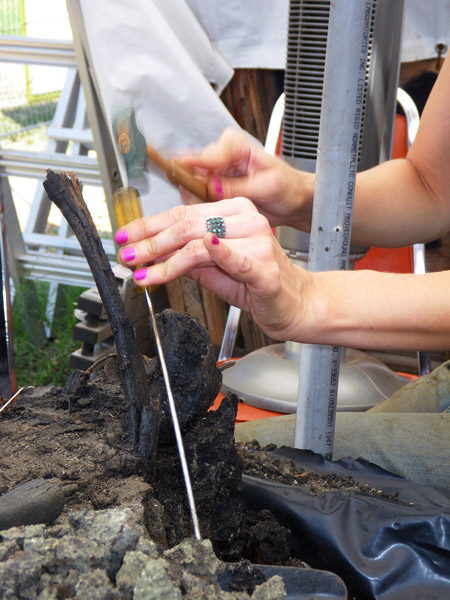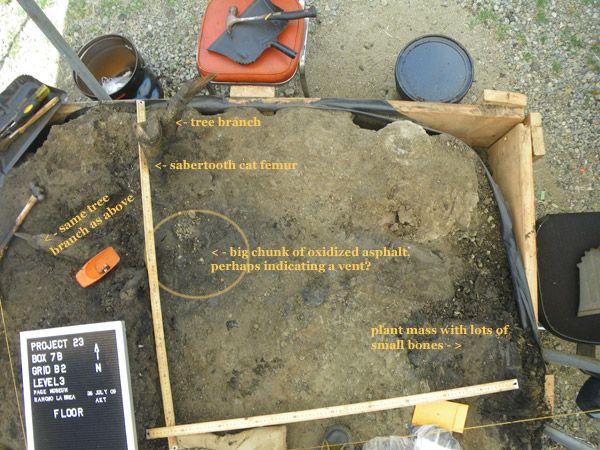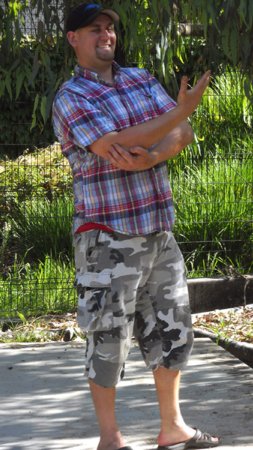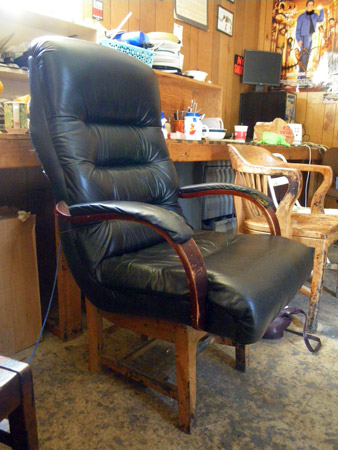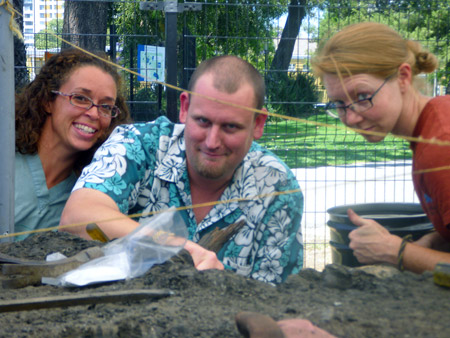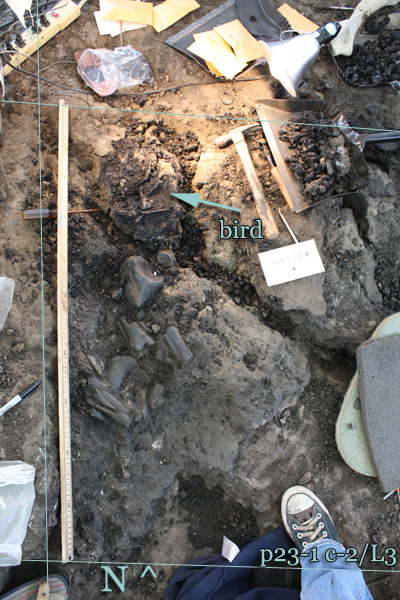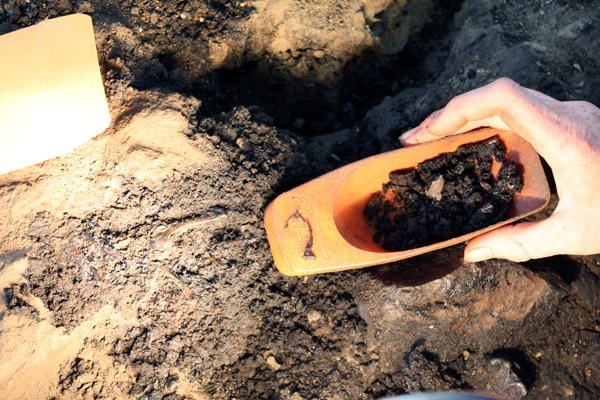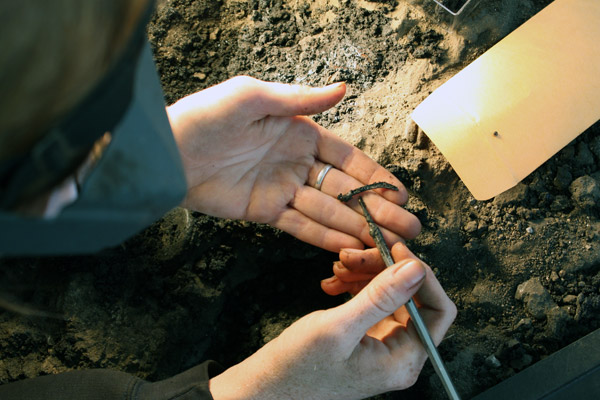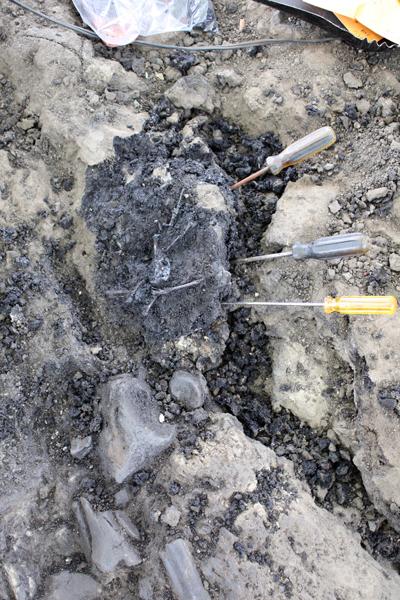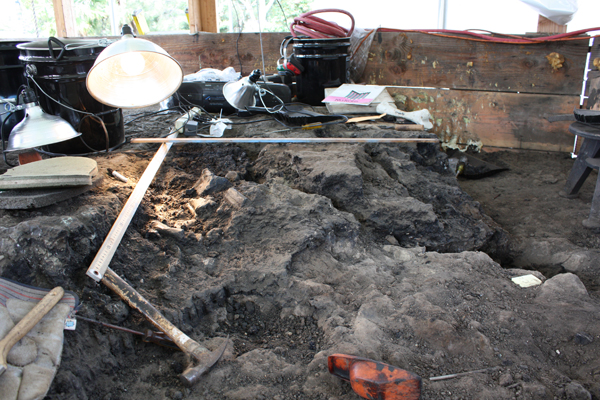With Ryan gone, life is much daintier here at Rancho La Brea.
However, this does not mean that we are not still capable of great feats of strength:
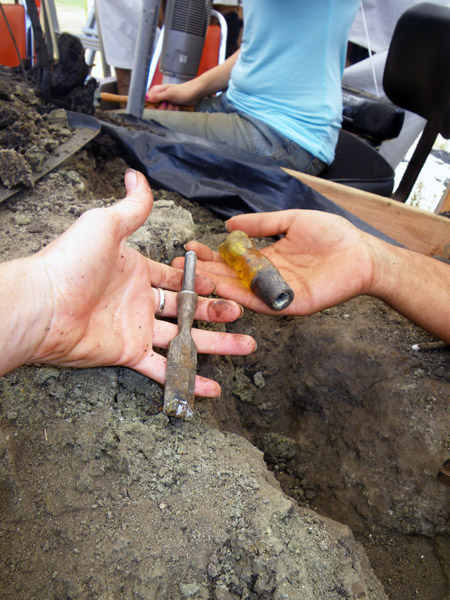
once, this was a chisel. now, it is rubble. such is life.
as is evidenced by the still-growing pile of broken tools left in our wake (volunteer Meena broke this one...)
Thus, over the last week our girlie muscles have brought Deposit 7B down almost a meter below its original grade. 7B is small, and not densely fossiliferous, but nevertheless productive enough to stay interesting:
The femur is the latest of several sabertoothed cat bones we've excavated from this area (including a skull!), and we're wondering if they're all from the same individual animal. We won't know for sure until they're cleaned and officially identified by the folks in the lab.
Less immediately exciting, but still important: there's a huge chunk of rock hard oxidized asphalt right in the middle of the deposit. There are bones around this asphalt, but not in it. We think this might be a vent -- the fissure in the ground that the asphalt originally oozed up from! We've seen this in Pit 91 before, but haven't been able to observe it as well as now. We only worked in Pit 91 for 12 weeks out of the year, and would only excavate a fraction of the exposed grids each season. This means that though interesting geological features were documented, it would sometimes take years to see if they continued another foot below the surface -- just because it took us that long to excavate the entire floor. Working year round with smaller deposits is allowing us to focus on unexpected geologic/taphonomic environments like this one.
I mentioned the lab earlier, and soon we'll have a proper Update From Indoors but until then:
here's a soundtrack-less time lapse of the preparation of Zed's right femur. Still a work in progress, but you get the general idea. Email subscribers: visit excavatrix.blogspot.com to see the video. Or scroll down: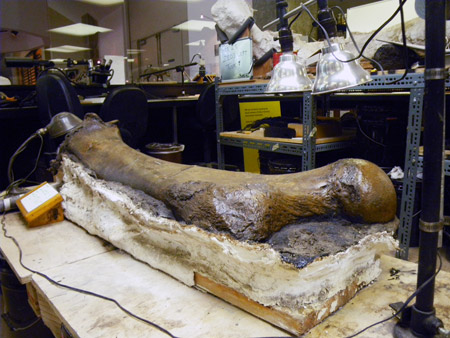
to see Zed's femur in it's shiny, well polished glory.
That's it for now, more later!
